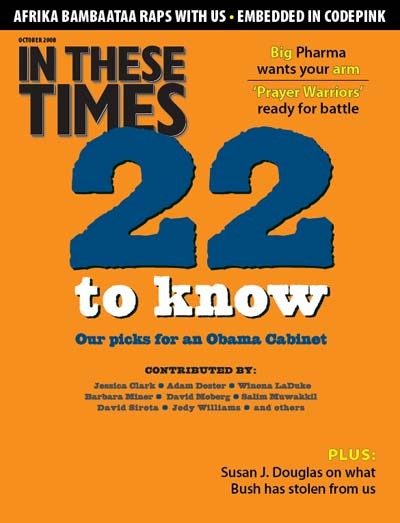This November, moments before millions of voters flock to the polls to elect America’s 44th president, law enforcement officials will make their 20 millionth marijuana arrest.
Yet in the days leading up to this appalling milestone, it’s unlikely either candidate will call for – or even so much as entertain – any change in U.S. pot policies. It’s even less likely the mainstream media will care.
Since the early ’90s, the total number of Americans busted annually for pot has nearly tripled. In 1991, police arrested a modern low of 288,000 people for minor marijuana violations in the United States, according to the FBI’s annual Uniform Crime Report. By 2006 (the last year for which data is available), a record 830,000 people were arrested. (Of those arrested, an estimated 90 percent are charged with minor possession – not trafficking, cultivation or sale.)
That’s one American arrested for pot every 38 seconds.
Yet despite this massive increase in arrests – by contrast, federal statistics indicate that adult marijuana use has remained fairly stable over the past decade – the mass media and Congress continue to ignore the story.
By doing so, they ignore the plight of millions of Americans who suffer significant sanctions and hardships because of pot-related run-ins with law enforcement. These penalties include probation and mandatory drug testing; loss of employment; loss of child custody; removal from subsidized housing; asset forfeiture; loss of student aid; loss of voting privileges; loss of adoption rights; and loss of certain federal welfare benefits, such as food stamps.
Some Americans serve time for pot. Nearly 13 percent of state inmates and 12.4 percent of federal inmates are incarcerated for marijuna-related drug violations, according to a 2006 Bureau of Justice Statistics report. (The report did not include the estimated percentage of inmates incarcerated in county jails for pot-related offenses.)
In human terms, this means that some 34,000 state inmates and an estimated 11,000 federal inmates are serving time behind bars for violating marijuana laws.
In fiscal terms, this means U.S. taxpayers are spending more than $1 billion annually to imprison pot offenders.
The front-end criminal justice costs – such as the number of hours a police officer must put in to arrest and process the average pot offender – is far greater. Some researchers, such as Harvard University economist Jeffery Miron, estimate it at upward of $7 billion a year.
But the financial and social costs tell only part of the story.
Up to 70 percent of all individuals in drug treatment for pot are placed there by the criminal justice system, according to statistics published by the U.S. Substance Abuse and Mental Health Services Administration. In other words, these individuals were ordered by a judge (or a drug court) to attend “rehab” in lieu of jail, or as a requirement of their probation. Of those enrolled in treatment, federal statistics indicate that more than one in three had not even used marijuana in the 30 days prior to their admission.
Yet, disingenuously, the White House argues that these rising admission rates justify the need to continue arresting cannabis users, even though the policy, not the drug, is fueling the surge in drug treatment. At the same time, thousands of Americans seeking – and needing – drug treatment are denied because facilities lack bed space.
Equally troubling yet seldom discussed publicly is the reality that marijuana enforcement disproportionately affects citizens by age. According to data compiled by the FBI, 74 percent of all Americans busted for pot are under 30. One out of four is 18 or younger.
We now have a generation (or two) that is so alienated that many young people believe the police are an instrument of their oppression rather than their protection.
While young people suffer the most under current anti-pot laws, they lack the financial means and political capital to influence politicians to challenge them. They also lack the money to adequately fund the drug law reform movement at a level necessary to represent and protect their interests.
As a result, marijuana arrests continue to climb unabated. And few in the mainstream press – and even fewer lawmakers – feel any sufficient political pressure to address it.






